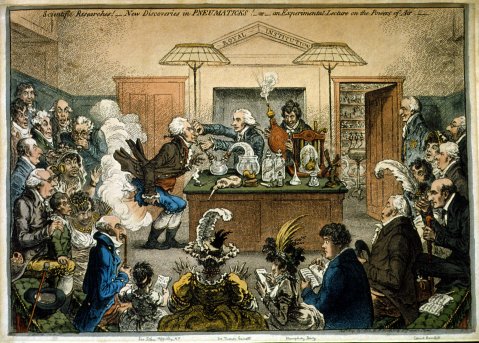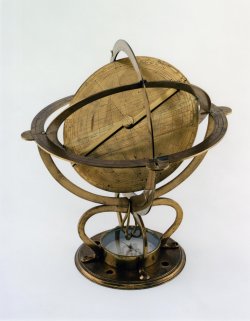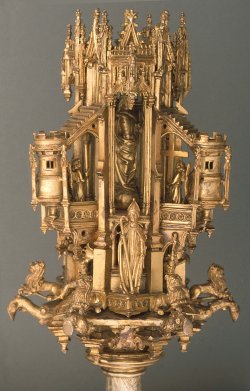University artefacts of ‘national significance’

Historical artefacts and scientific instruments and specimens belonging to the University of St Andrews have been recognised as `nationally significant’ by the Scottish Museums Council.
The three collections are among ten across Scotland named today (Monday 21 January 2008) as Recognised Collections of National Significance.
 Items from the St Andrews collections will be on display together for the first time when the new University museum, MUSA, opens this summer. Highlights from the collections now `Recognised’ include the University’s three medieval maces and College silver, its unique collection of 17th and 18th century archery medals, the great astrolabe and Universal Instrument (1582) by Humfrey Cole (1575) and rare pieces of eighteenth century chemical glassware.
Items from the St Andrews collections will be on display together for the first time when the new University museum, MUSA, opens this summer. Highlights from the collections now `Recognised’ include the University’s three medieval maces and College silver, its unique collection of 17th and 18th century archery medals, the great astrolabe and Universal Instrument (1582) by Humfrey Cole (1575) and rare pieces of eighteenth century chemical glassware.
Founded in 1413, St Andrews is Scotland’s oldest university and its history, personalities and teaching practices can be traced through the collections of documents, art works, photographs, laboratory equipment and specimens that have been accumulated over the centuries.
The University’s museum collections altogether contain approximately 112,300 objects covering a wide range of subject areas from art to zoology.
The three collections that have received Recognition status are the Chemistry Collection, the Heritage Collections and the Historic Scientific Instruments Collection.
Professor Ian Carradice, Head of Museum Collections at the University, said:
 “This is great news, and very timely, since many of the highlights from these collections will be accessible to the general public when our new Museum of the University of St Andrews (MUSA) opens this summer. The Heritage Collections of the University of St Andrews symbolise the development of higher education in Scotland, from its medieval origins to the present day, and the two Recognised science collections illustrate some of the great contributions made by Scotland to the advancement of learning.”
“This is great news, and very timely, since many of the highlights from these collections will be accessible to the general public when our new Museum of the University of St Andrews (MUSA) opens this summer. The Heritage Collections of the University of St Andrews symbolise the development of higher education in Scotland, from its medieval origins to the present day, and the two Recognised science collections illustrate some of the great contributions made by Scotland to the advancement of learning.”
Douglas Connell, Chair of the Recognition Committee which oversees the award, said, “To achieve Recognition status, the applicants had to demonstrate the uniqueness, authenticity, comprehensiveness, and national value of their collection.
“The scheme has highlighted the incredibly high standard of the collections held by museums and galleries across Scotland and we hope that achieving Recognition status will help to attract more visitors both locally and from further afield.”
The Recognition Scheme, launched in October 2006, is managed by the Scottish Museums Council on behalf of the Scottish Government, and is designed to identify, and subsequently support, collections of national significance held in Scotland’s non-national museums and galleries. Today’s announcement brings the number of Recognised Collections of National Significance across Scotland to 27.
Custodians of Recognised Collections will be presented with specially designed plaques and certificates to display at their venue at a special event in Dundee this Friday (25 January).
ENDS
NOTE TO EDITORS:
PROFESSOR IAN CARRADICE IS AVAILABLE FOR INTERVIEW ON 01334 462402 or email [email protected]
For further information on the Recognised Collections of National Significance scheme contact: Scottish Museums Council: Eithne Ní Chonghaile, Communications Manager (PR & Events), email: [email protected] or phone 0131 550 4123
NOTE TO PICTURE EDITORS:
IMAGES ARE AVAILABLE FROM THE PRESS OFFICE – CONTACTS BELOW.
Issued by the Press Office, University of St Andrews
Contact Gayle Cook, Press Officer on 01334 467227 / 462529, mobile 07900 050 103, or email [email protected]
Ref: Collections recognised 210108
View the latest University press releases at www.st-andrews.ac.uk
Category University news